The vibrant colors of prayer flags whipping in the wind are a common site in Tibet and throughout the Himalayan region. They have come to be a profound symbol of the spirituality of the region and carry with them part of the rich history of the region. Here we’ll take you through the significance and meaning behind Tibetan prayer flags.
The Origin of the Tibetan Prayer Flags
With a history stretching back over 2000 years, the exact origin of prayer flags is still debated. Flags and banners have been part of religious traditions in Tibet since the time before Buddhism was introduced. These practices were an early precursor to the prayer flags we have come to know today.
 Prayer flags have been part of religious traditions in Tibet.
Prayer flags have been part of religious traditions in Tibet.The arrival of Buddhism in the 7th century began the development of the distinct Tibetan Buddhism now practiced with the assimilation of traditions from the Himalayan region. Tibetan Buddhists began using flags as a way to spread positive energy, blessings, and prayers to the surrounding environment.
Wind can be a dramatic feature of life on the Tibetan Plateau, so it was natural to incorporate that into local beliefs. Prayer flags are hung so that the wind blowing through them will carry their benefits over the land and to its inhabitants.
What is Written on Tibetan Prayer Flags?
Tibetan prayer flags are inscribed with sacred mantras, prayers, and symbols that hold deep spiritual significance. The most famous is the mantra "Om Mani Padme Hum", it is associated with Avalokiteshvara, the bodhisattva of compassion. The mantra is believed to bring compassion, wisdom, and protection to those who encounter it.
In addition to other mantras, long complex prayers called Dharanis are also found written on prayer flags. Originating from Mahayana Buddhism, they are intended to invoke blessings and protection.
 Mantras and long complex prayers are written on Tibetan prayer flags.
Mantras and long complex prayers are written on Tibetan prayer flags.Besides writing, a variety of symbols are commonly featured. Some, such as the eight auspicious symbols, such as the endless knot, lotus flower, and parasol, represent various aspects of Buddhist teachings. The Wind Horse, often depicted in the center of Tibetan prayer flags, is a symbol of the human soul and life force. Also, Buddhist symbols such as the Dharma Wheel and conch shell, or elemental symbols representing the natural elements water, earth, fire, and air, can commonly be seen.
What is the Color Meaning of the Tibetan Prayer Flags?
The vibrant colors of Tibetan prayer flags are known for each carry a specific symbolic meaning. The five colors are arranged in a particular order representing the five elements.
Blue: The blue color represents the element of space or the sky. It symbolizes vastness, openness, and the infinite expanse of the heavens. Blue also signifies wisdom and the power of contemplation.
White: White is seen as a color of healing and purification and is associated with the element of clouds. It represents purity, peace, and the qualities of clarity and understanding.
 Tibetan prayer flags have five colors representing five elements.
Tibetan prayer flags have five colors representing five elements.Red: Red symbolizes energy, life force, and transformation through the element of fire. The color represents the passion and intensity needed for spiritual practice.
Green: Green is linked to the element of water, symbolizing harmony, balance, and growth. It is also associated with the qualities of compassion and the soothing, healing aspects of water.
Yellow: Yellow is seen as a color of generosity and humility, and represents the element of earth. It symbolizes stability, groundedness, and the qualities of patience and equanimity.
What are the Different Types of Tibetan Prayer Flags?
There are two primary types of Tibetan prayer flags, each with its own characteristics and uses. The first type is a horizontal prayer flag called a Lung Ta, which translates to “Wind Horse”. Typically larger than the vertical prayer flags, these are rectangular and sewn together from multiple panels of colored cloth.
Horizontal flags display sacred mantras, prayers, symbols, and images of deities. The central image of the Wind Horse is often surrounded by these elements. They are designed to carry prayers and blessings by flapping in the wind when strung between two points, such as the eaves of buildings, trees, or poles.
 The Tibetan prayer flags hung at Gawula Pass
The Tibetan prayer flags hung at Gawula PassThe other type of prayer flag are vertical flags known as Darchog or Dar Cho. These flags are more elongated and narrow than horizontal flags. They are attached to poles or sticks and arranged in a vertical line, commonly used along trekking and pilgrimage routes.
Both types of Tibetan prayer flags share the same intention: to promote peace, compassion, and well-being. Their specific designs and uses may vary, but their symbolic and spiritual significance remains consistent in Tibetan culture and Buddhism.
What Religion Uses Tibetan Prayer Flags?
Tibetan prayer flags are primarily associated with Tibetan Buddhism, also known as Vajrayana Buddhism. Tibetan Buddhism is a distinct form of Buddhism that incorporates elements of Indian Buddhism, the indigenous Tibetan Bon religion, and various other influences. Prayer flags play a significant role in this tradition.
Prayer flags are part of the spiritual practice of Tibetan Buddhism. Hanging and displaying prayer flags are considered acts of merit and devotion. It is common to hang new prayer flags during religious festivals such as the Saga Dawa Festival. They can also be found marking sacred sites and pilgrimage routes.
 Prayer flags seen at Mount Kailash during Saga Dawa Festival
Prayer flags seen at Mount Kailash during Saga Dawa FestivalWhere to Hang Tibetan Prayer Flags?
Prayer flags are traditionally hung in specific locations to maximize their exposure to the wind and fulfill their purpose of spreading blessings and positive energy to the surrounding environment. Mountain passes are one of the most popular locations. There you’ll see the flag fluttering aggressively in the high-altitude winds. Bridges and river banks are also important locations where prayer flags are hung. The nearby water is believed to enhance their purifying and blessing qualities.
Trekking and pilgrimage routes are often marked with prayer flags at specific intervals and significant landmarks. They are also used as both spiritual and decorative elements at religious sites such as Buddhist monasteries, stupas, and temples, and even in people's homes and gardens.
When are Auspicious Days to Hang Tibetan Prayer Flags?
On certain days during the year, it is more auspicious to hang prayer flags. On these days it is considered to be an especially meritorious act and a time when the blessings created are particularly potent.
One of the most significant occasions is on Losar, the Tibetan New Year. Hanging new prayer flags during Losar is a common tradition to welcome the New Year with positive energy. Saga Dawa, also known as the Triple Blessed Festival, commemorates the birth, enlightenment, and parinirvana of the historical Buddha, and an especially auspicious time for hanging new prayer flags and performing acts of merit and kindness.
Other occasions fall on the anniversary of important lamas and other figures in Tibetan Buddhism. Prayer flags are part of honoring their contributions to the tradition.
 Hanging new prayer flags during Losar is a common tradition.
Hanging new prayer flags during Losar is a common tradition.Is It OK to Have Tibetan Prayer Flags?
Tibetan prayer flags are not exclusive to practitioners of Tibetan Buddhism. They are often seen as cultural and artistic symbols of peace and compassion and are widely appreciated in many parts of the world.
It is considered a good omen to receive Tibetan prayer flags as a gift. Tourists often purchase them as souvenirs when visiting Tibetan regions, and it's entirely acceptable to do so. It is expected that anyone buying or receiving a prayer flag will treat it respectfully and hang it in an appropriate place where they can catch the wind, as this is an essential part of their purpose.
Conclusion
The colorful beauty and spiritual significance of Tibetan prayer flags are an iconic cherished part of Tibetan culture. They serve as a tangible expression of the region's rich religious heritage and a symbol of goodwill, compassion, and unity among all living beings. As they flutter in the breeze, they remind us of the interconnectedness of all things and the enduring quest for peace and harmony.











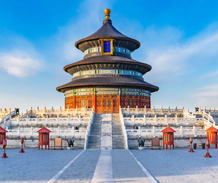

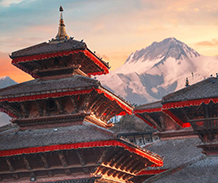
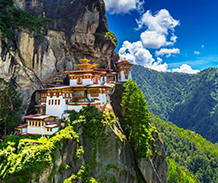





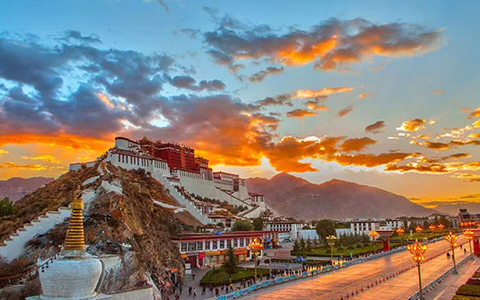




 Prayer flags have been part of religious traditions in Tibet.
Prayer flags have been part of religious traditions in Tibet.
 Mantras and long complex prayers are written on Tibetan prayer flags.
Mantras and long complex prayers are written on Tibetan prayer flags. Tibetan prayer flags have five colors representing five elements.
Tibetan prayer flags have five colors representing five elements. The Tibetan prayer flags hung at Gawula Pass
The Tibetan prayer flags hung at Gawula Pass Prayer flags seen at Mount Kailash during Saga Dawa Festival
Prayer flags seen at Mount Kailash during Saga Dawa Festival Hanging new prayer flags during Losar is a common tradition.
Hanging new prayer flags during Losar is a common tradition.
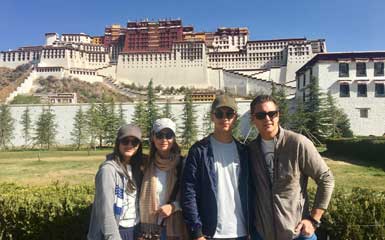


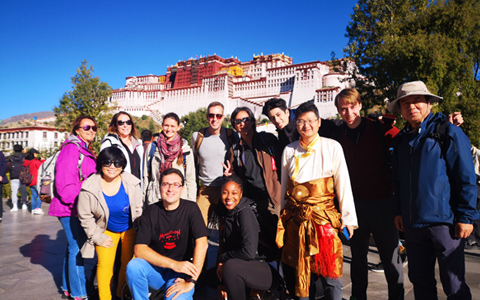


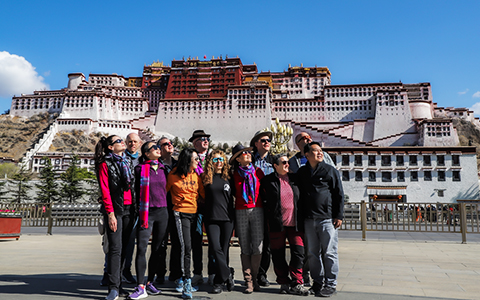

Ask a Quick Question